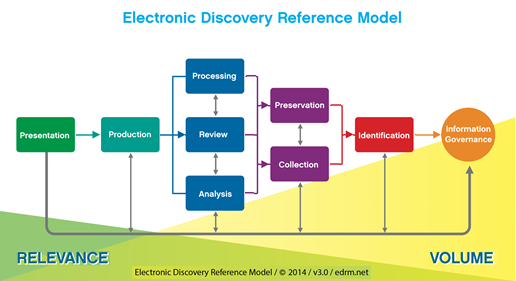EDRM Has a Twist on its Fall Workshop (and a Webinar Today!): eDiscovery Trends

Around this time of year, EDRM members (like me) expect to convene for our semi-annual visit to St. Paul for the mid-year meeting. This year, EDRM has a twist on the mid-year meeting, which they’re now calling the “fall workshop”. There’s also a webinar today!
As noted on their site, this year’s EDRM Fall Meeting will be hosted at Relativity Fest in Chicago (held at The Hilton Chicago in Chicago, Illinois) instead of the usual soirée in St. Paul. If you’re an EDRM member, you can join us next week on Monday, October 12 for our keynote and workgroup, and on Tuesday, October 13 for two educational sessions.
On Monday, the workgroup will be conducted from 11:00 am to 5:45 pm and will consist of project updates, planning for projects and initiatives for the next six months and work on those projects and initiatives (to the extent time permits).
On Tuesday, for the first time ever at a workshop meeting, EDRM will be holding two educational sessions featuring EDRM members and materials. They are:
- Using the eMSAT-1 to Evaluate Internal Processes and Maximize Review Proficiency: This panel will provide strategies for implementing the eMSAT-1, and using the results to improve efficiencies and profits. The session will also focus on how the eMSAT-1 results can be used to design protocols for processing, review and analysis that allow companies to maximize use of review software. Tuesday from 9:00-10:00am.
- Strategies for Calculating: Using the EDRM’s Data Calculator and Other Budgeting Tools to Estimate Costs: This panel will focus on various ways to approach budgeting E-Discovery projects. The panelists will share ideas and best practices regarding budgeting. They will show how using tools like the EDRM’s recently released Data Calculator can help to make once daunting budgeting a breeze. Tuesday from 10:15-11:15am.
As an EDRM member, you can attend the EDRM activities with the EDRM Pass for $550 (which includes Relativity Fest’s Sunday night reception) or the Relativity Fest Pass for $1,150, which gives you access to the EDRM activities and ALL of the Relativity Fest activities too.
Speaking of EDRM, they also have a webinar today – “A Practical Approach to Your in-house eDiscovery Collections,” – from 1:00 to 2:00 pm Central, sponsored by Pinpoint Labs. This webinar will include a demonstration of how internal corporate IT managers, security professionals, or litigation support personnel can create in-house E-Discovery collections using Pinpoint Labs Harvester software. Learn how to design an automated self-collection kit for remote custodians, or deploy Enterprise wide stealth jobs that target discoverable files and emails for attorney review.
To register for today’s webinar, click here. If you can’t make it today, but want to catch the recording of the webinar (or other past EDRM webinars), click here to see our previous blog post about EDRM webinars.
Not an EDRM member? Why the hell not?!? :o) Here’s information on the cost to join – depending on who you are, it might be free!
So, what do you think? Are you going to the EDRM Fall workshop? Please share any comments you might have or if you’d like to know more about a particular topic.
Disclaimer: The views represented herein are exclusively the views of the author, and do not necessarily represent the views held by CloudNine. eDiscovery Daily is made available by CloudNine solely for educational purposes to provide general information about general eDiscovery principles and not to provide specific legal advice applicable to any particular circumstance. eDiscovery Daily should not be used as a substitute for competent legal advice from a lawyer you have retained and who has agreed to represent you.






